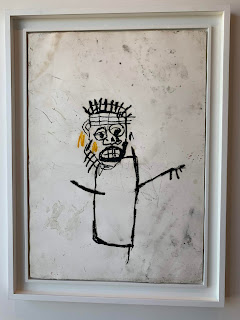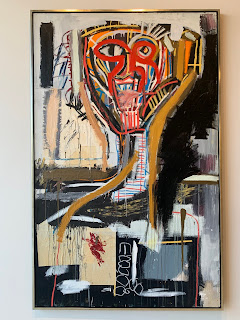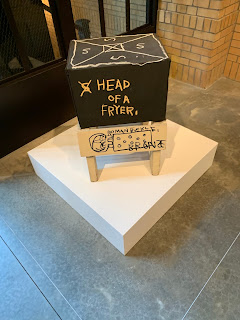 |
| Territories inherited by Mary of Burgundy upon the death of Charles the Bold (wikipedia, Marco Zanoli) |
The House of Habsburg would continue to rule the Low Countries until their split into two zones in the late 16th century and then to rule the Spanish Netherlands thereafter. The scope of this post is the period of Habsburg rule prior to the breakup of the Low Countries.
The House of Habsburg
Louis XI, King of France, was a cousin of Charles the Bold and contested Mary's right to the Burgundian territories. He sought to enforce his claim militarily but was defeated by Maximilian in 1479 at the Battle of Guinegate.
 |
| Maximilian I |
Mary died an untimely death in 1482 when she was thrown off a horse, which subsequently fell on her, causing massive internal and external injuries. The marriage agreement prevented either of the partners from inheriting the other's holdings upon death, so Mary's lands fell to her minor son Philip.
Maximilian I
In order to preserve his son's holdings, Maximilian entered into the Treaty of Arras with Louis XI. Under the terms of the treaty, Maximilian promised his daughter's hand in marriage to the future Charles VIII and, as a dowry, ceded Burgundy, the County of Artois, and some minor lordships to the French.
Maximilian became Regent but his authority was not uncontested. As shown in the map below, many of the principalities took direct action in resistance to his authority.
Ghent and Bruges were among the most recalcitrant of the areas with Ghent (i) refusing to hand over his son who "was held as a hostage to secure" its citizens "against any infringement of their liberties" and (ii) entering into negotiations with Louis XI. Maximilian launched a campaign against the Flemings in 1985 and defeated them soundly, gaining possession of his son in the process.
Bruges and Ghent rebelled once again in 1988 and captured and inprisioned Maximilian while he was laying siege to Bruges. He was released as his father was approaching with a large army to rescue him. Under the terms of the release he was to:
- Surrender his powers as regent to a council of Flemings
- Withdraw all foreign troops from the Netherlands
- Provide good-faith hostages.
 |
| Re-apportionment of territories after 1493 Treaty of Senlis between Maximilian I of Germany and Louis XI of France (underlying map wikipedia. Marco Zanali) |
Maximilian returned to his ancestral lands in 1494 (after being crowned Holy Roman Emperor) and turned the reins of governing the Netherlands over to his son Philip. The revolts of the cities between the years 1477 - 1492 had failed but it was a harbinger of things to come.
 |
| Philip the Handsome, Duke of Burgundy Source: wikipedia |
The Seventeen Provinces
As stated previously, Duke Albert had been unable to subdue Gelderland prior to Philip's accession to the position of Duke of Burgundy. That situation was corrected, and then some, in a series of battles (The Guelders Wars) beginning in 1502 and ending in 1543.
Guelderland had allied itself with a number of its neighbors and was not only resisting Habsburg efforts at submission, it was itself mounting raids into Holland. One of its allies was Frisia and, in 1522, Habsburg forces under the command of Georg Schenck van Tautenburg pushed Guelder forces out of Frisia. By December of 1524 Frisia was firmly in the hands of the Habsburg forces and was renamed the Lordship of Frisia and governed by a Stadtholder.
The Prince-Bishop of Utrecht found himself in conflict with his citizens who escalated matters by inviting in the Guelders army. The Prince-Bishop was forced to turn to Charles V for assistance. Overijissel was also host to some of the Guelders forces but was ready to rid itself of these now unwelcome "guests" and also sought the assistance of Charles V in this regards. Charles said he was willing to assist under the condition that he be proclaimed lord of those lands if successful. They agreed and van Tautenburg easily defeated the Guelders army. The Bishop handed over power to Charles in October 1528 and he divided the Bishopric of Utrecht into the Lordship of Overijist and the Lordship of Utrecht, each ruled by a Stadtholder.
 |
| Charles V, Holy Roman Emperor Source: wikipedia |
Schenck van Tautenburg continued the territorial expansion by defeating a Guelders-and-allied army to gain the territories of Gronigen and Dranthe. These were subsequently renamed the Lordship of Gronigen and the County of Dranthe, each of which would be governed by a Stadtholder.
Charles of Guelders had battled valiantly against the Habsburgs for many years and did not want to see his territory fall into the hands of Charles V on his death (he having no natural-born heirs). He appointed William, Duke of Jülech-Cleves-Berg as his successor. William allied himself with France and attacked Low Countries territory in a war between that area and France. Mary of Hungary, then Governor of the Netherlands, responded by sending and army towards Guelder and Jülich, conquering them both in 1543. In a treaty ending the war, William ceded the Duchy of Guelder and the County of Zutphen to Charles V.
This last territorial acquisition brought the number of Low Countries Provinces to 17 (see map below) a number that would hold until the separation into the northern and southern provinces 25 years or so later.
 |
| The 17 Low Countries Provinces as of 1543 (Source: wikipedia) |
****************************************************************************************************************************
This, then, was the zenith in the expansion of the Hapsburg Low Countries Provinces. In my next post I will cover the forces driving in the opposite direction (deconstruction) and the resulting architecture.
©EverythingElse238































































